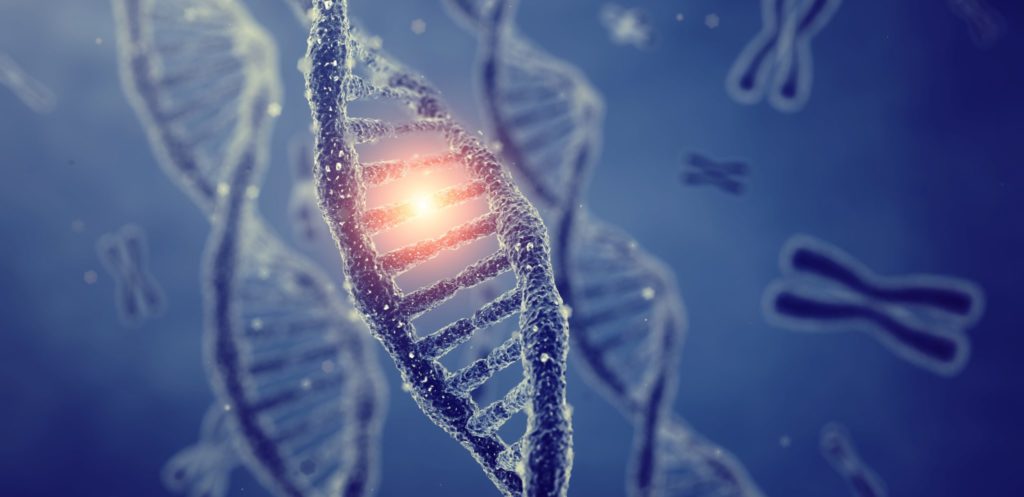Breast cancer is the most common form of cancer diagnosed in women. But men can get breast cancer, too – and they often feel left out of the breast cancer conversation. Continue reading to learn six surprising facts about breast cancer in men.
Fact #1: Yes, Men Can Get Breast Cancer
We’re used to hearing about breast cancer in women. But men can also develop breast cancer, because men and women have the same underlying structures in their breasts.
Before puberty, both males and females have a small amount of breast tissue, including milk ducts underneath the nipple. When women go through puberty they develop many more of these structures, but adult men still have the same number they had before puberty. In men, these structures aren’t normally functional.
Breast cancer most often begins in these ducts. Cancer develops when duct cells begin to grow uncontrollably, invading surrounding tissue or spreading to other parts of the body. Cancer that begins in skin or tissue that surround organs – including in duct cells in the breast – is called carcinoma. Carcinomas are by far the most common form of male breast cancer.
Fact #2: Male Breast Cancer is Rare, But Rates are Rising
On average, the American Cancer Society estimates that about 2,670 new cases of male breast cancer are diagnosed each year in the United States. If you’re a man in the U.S., your average lifetime risk of developing breast cancer is about 1 in 833.
For perspective, about 268,000 cases of breast cancer are diagnosed in women each year in the United States. That means that an American male is about 100 times less likely than a woman to develop breast cancer during his lifetime.
Though the overall risk of developing breast cancer as a male is low, rates are rising. Since 1975, the number of men diagnosed with breast cancer yearly in the United States has increased by between 25 and 42%. Doctors aren’t entirely sure why this is happening, but they note that rates of female breast cancer have also risen over that time period.
Fact #3: Genes Can Play a Factor – And Can Put Children at Increased Risk

Since male breast cancer is so rare, why do some men get it? Scientists aren’t certain about the causes, but certain risk factors may make men more likely to develop breast cancer.
Risk factors include:
- Aging
- Family history of breast cancer
- Inherited gene mutations (including BRCA1 and BRCA2)
- Radiation exposure in the chest
- Heavy drinking
- Liver disease
- Estrogen treatments
- Obesity
- Certain testicular conditions
Men with an inherited gene mutation may have a higher chance of developing breast cancer. For men with the BRCA2 mutation, for example, the risk of developing breast cancer is about 8 times greater than for men without the mutation.
In addition, men with an inherited gene mutation have a 50% chance of passing that mutation along to their children. This can dramatically increase the likelihood that their daughters will develop breast cancer, too. Because of this dramatic increase, it’s recommended that males with breast cancer have genetic testing to see if they have a mutation that might affect their children’s chance of getting cancer.
Fact #4: Because Men May Ignore Symptoms or Not Be Aware of the Risk, Outcomes Can Be Worse Than For Women
Since male breast cancer is relatively rare, men aren’t typically taught the risk factors or potential symptoms of breast cancer. If they do have symptoms, they might not know what they mean or seek medical help.
The most common symptoms of male breast cancer include:
- Lump or thickening in the breast or nipple
- Changes to the skin covering your breast
- Changes to your nipple, including redness or scaling
- Nipple discharge
Men tend to have more advanced disease than women when they are diagnosed because they wait to seek medical help or don’t know the symptoms. This means that, broadly speaking, males diagnosed with breast cancer can have worse outcomes than women. However, when cancer is detected early, remission rates in men are very high.
Fact #5: Mammograms Aren’t Just for Women

Just like women, men can receive a mammogram (a low dose x-ray of the breast) or other types of imaging exams to determine if cancer is present. A mammogram takes only a few seconds, and it requires pressing the breast between two plates to compress the tissue and get a clearer image. Depending on the results of the mammogram, further tests, like a biopsy or ultrasound, might be needed.
As always, just because your doctor orders an imaging exam or biopsy doesn’t mean you have cancer. In fact, most results of these tests don’t show cancer.
If you or a loved one is concerned about breast cancer, contact your care provider. They can perform a physical examination and recommend imaging options or further studies.
Fact #6: Men Can Feel Left Out of the Breast Cancer Conversation
Men diagnosed with breast cancer might not feel at home in breast care centers decorated in pink, or in waiting rooms where they are the only male present.
But the truth is that breast cancer affects thousands of men every year. Having breast cancer, or being concerned about a possible symptom, doesn’t mean that a man should feel ashamed or embarrassed. The biological fact is that cancer can develop in places all over the body, from bones to organs to the skin. Breasts are no different.
Here at UVA, we work hard to make men with breast cancer feel welcome and cared for. Men with breast cancer aren’t alone here: we’ve treated many men with breast cancer. Our subspecialty trained breast imagers are experts at detecting and diagnosing male breast cancer. And our breast care team has extensive experience in treating men with breast cancer.
If you’re concerned about breast cancer, talk to your doctor about the imaging and care options available at the UVA Breast Care Center. Learn more about male breast cancer by clicking here, or about all of UVA’s breast care services by clicking here. To schedule a consultation at the Breast Care Center, call (434) 924-9333.
Click here to read more articles about how radiology can positively impact men’s health.



